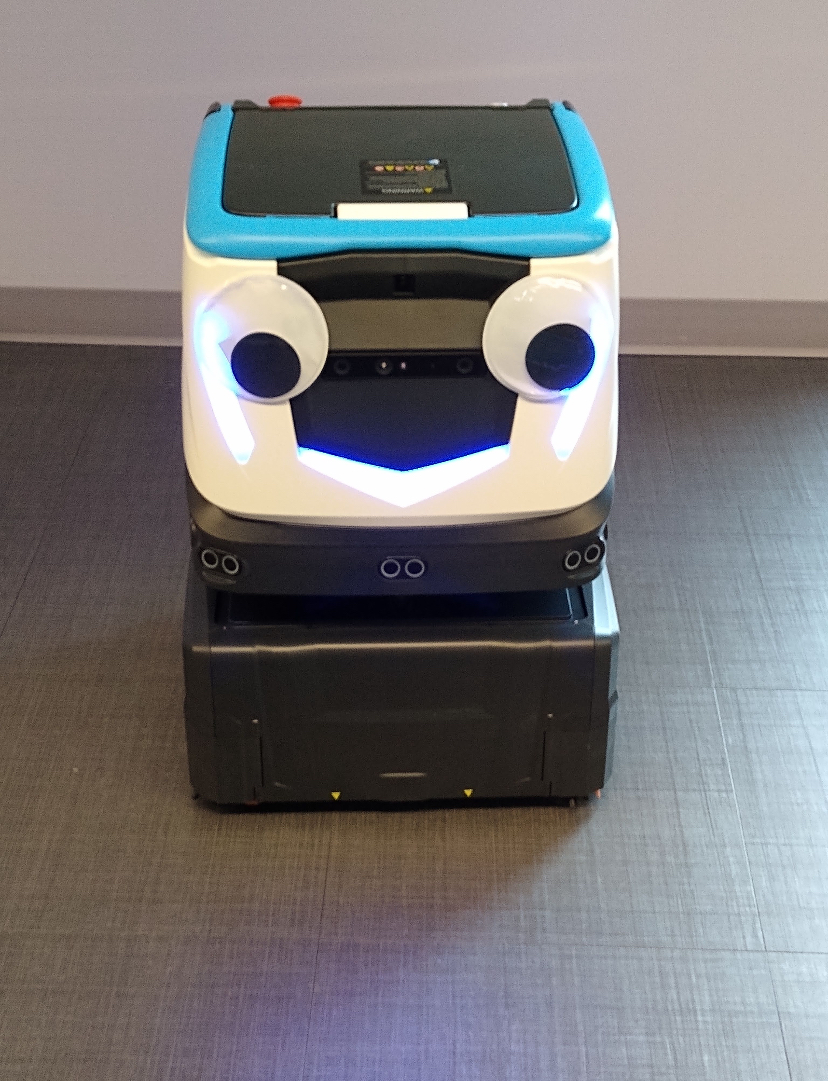MOORHEAD — Humans have a complicated relationship with artificial intelligence.
From the Pixar movie, Wall-E, which depicts robots as plucky heroes saving humanity, to the Terminator films, which depict a future in which robots have waged war on humans, it seems like humanity can’t make our minds up on if robots are our friends or our enemies.
Case in point, the Cobi 18 floor-cleaning robot.
The robot is known to some as Hall-E, an affectionate nickname playing off the aforementioned Pixar film, and to others as “murder bot.”
It can sometimes be seen in the mornings, patrolling the halls of the Integrated Science Center (ISC), where the building’s modern design complements Hall-E’s futuristic look.
Cobi, or Hall-E, is an autonomous floor scrubber that was introduced a year and a half ago and has helped fight the issues of dirty hallways and short staffing.
“If we can’t find staff or we can’t fill positions, then basically, AI comes into play,” said Robert Smith, the assistant director of Facilities Operations.
While Cobi does an adequate job of keeping floors clean, it is kept on the sideline unless its human counterpart is unavailable.
“It doesn’t vacuum but it puts down water and sucks it up. So it replaces mopping,” said Shaine Wanner, a building services custodian and the robot’s chief operator.
And it does so on its own, albeit with a little help from a human first. To program the bot, Wanner simply must drive the scrubber along the perimeter of a hallway, and Hall-E figures out the rest.
During the time when Hall-E is scrubbing while unsupervised, students have been known to adorn it with various props and stickers.
“What’s interesting is, we’ll send that [Hall-E] off on its route, but it will come back with stuff on it,” Smith said.
Among these have been bunny ears on Hall-E for Easter, and a witch’s hat and broom for Halloween.
“I had to move the broom though, because it was interfering with the sensors,” Wanner said.
Wanner has not, however, had to remove the gigantic pair of googly eyes that are affixed to the front of the robot.
While many students express their fondness for the robot by naming it Hall-E, one faculty member has a slightly different name.
“Murder bot the floor robot,” chemistry professor Graeme Wyllie, said.
Wyllie has a long history with the robot, who he describes as his “nemesis.”
“I’m not even sure when it started, but occasionally I’m sighted in the corridor yelling, ‘you shall not pass,’ trying to stop it,” Wyllie said.
One experience Wyllie had with the robot was in his physical science class for elementary education majors, in which his students had to attempt to measure the “murder bot’s” velocity.
“Which is not as easy as you would think,” Wyllie said.
The Cobi 18 has a sensor that can detect if an object is directly in front of it, such as a person, chair, or table leg. When it detects an obstruction, it will quickly stop and maneuver around the object so as not to bump into it.
This made it difficult to measure with the rudimentary tools they had on hand.
“In the labs, they have much more complicated sensors for measuring [velocity]. However, I’m teaching a class designed specifically for an elementary education major, and I wanted some examples they could measure just using the kind of stuff you have lying around,” Wyllie said.
Wyllie also used the robot as the subject for other mathematical problems.
“We also worked out to see if it falls off the roof how long it takes to hit the ground,” Wyllie said.
Wyllie also suspects that Hall-E may be hiding the extent of its capabilities.
“No one has ever seen the floor robot move between floors. I keep making jokes to the students about the fact that when no one’s around late at night, it climbs up and down the stairs or it’s got a special arm that reaches up and calls the elevator,” Wyllie said.
In reality, Hall-E is likely not changing floors on its own, as one of the drawbacks of the automated help is that it has a relatively short battery life of about 90 minutes.
“You know, and in [ISC], that’s essentially one floor, one level of the building,” Smith said.
After Hall-E has drained its battery, it returns to where it started for a brief six-hour nap to recharge.

